Sacral Chakra (Svadhishthana): Meaning, Location, and Symptoms of Blocked / Balance
The Sacral Chakra at a Glance Sanskrit Name – Meaning Svadhishthana – dwelling place of self Location Two inches below the navel Color Orange Seed Mantra VAM Element Water Characteristics Creativity, Relationships, and Sexuality Symptoms of balance Freedom of...
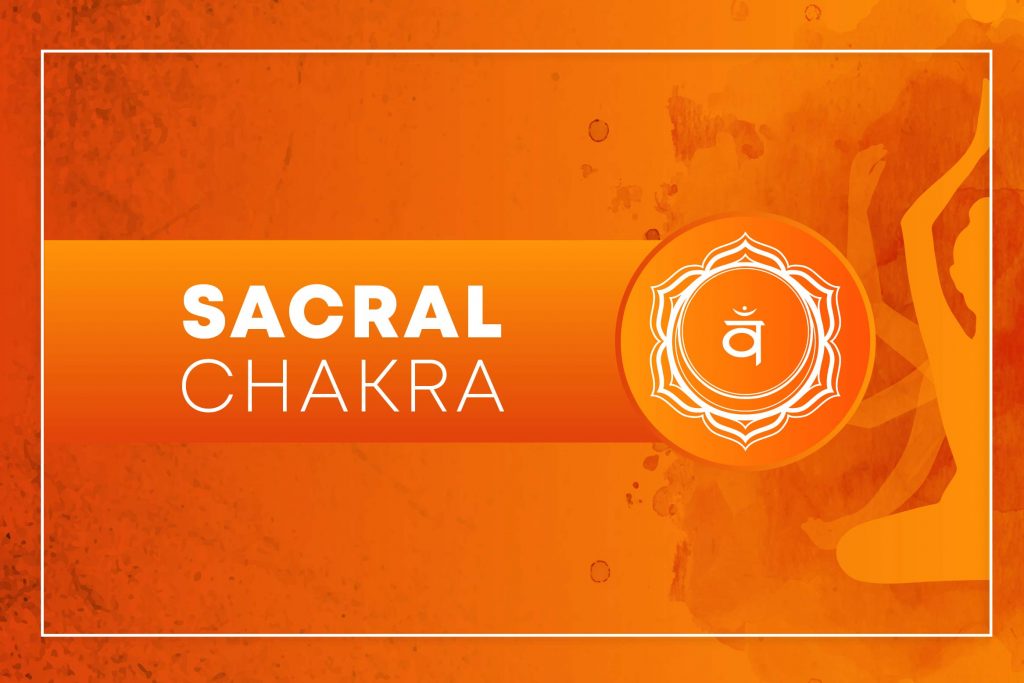

The Sacral Chakra at a Glance
| Sanskrit Name – Meaning | Svadhishthana – dwelling place of self |
| Location | Two inches below the navel |
| Color | Orange |
| Seed Mantra | VAM |
| Element | Water |
| Characteristics | Creativity, Relationships, and Sexuality |
| Symptoms of balance | Freedom of expression, energy for creativity, desire, movement, and pleasure. |
| Symptoms of blocked | Feelings of fear, depression, emotional instability, loss of imagination, sexual dysfunction, reproductive issues, and addiction. |
| Healing crystal | Carnelian, Amber, Orange Moonstone, Goldstone. |
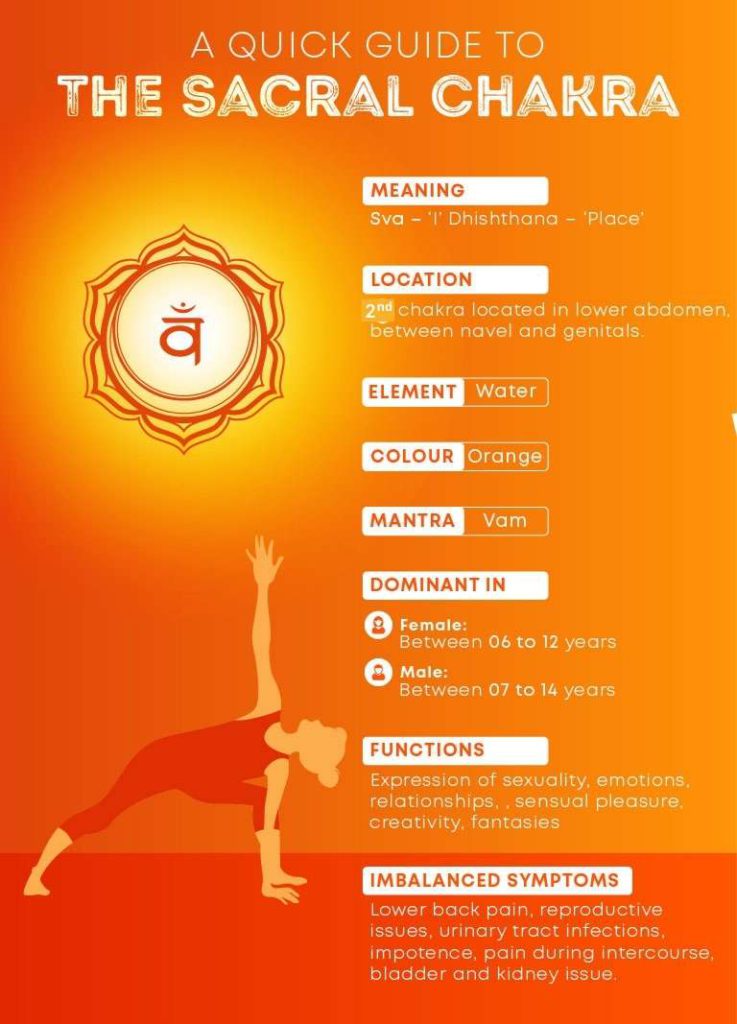 Image: Fitsri
Image: FitsriThe sacral chakra, or Svadhisthana, is the second of the seven major chakras. It is located along the spine, between the coccyx and the sacrum. This energy centre is linked to our conscious experiences, emotions, creativity, and karmic patterns.
In the journey of chakra evolution, once we move beyond the basic survival instincts governed by the root chakra (Muladhara), the sacral chakra marks the beginning of conscious awareness. While the root chakra reflects our unconscious drive for safety and stability, the sacral chakra is where prana (life force) begins to flow more freely, allowing us to engage with the world through feeling, sensation, and creativity.
Svadhishthana meaning
Svadhishthana is the Sanskrit name for the sacral chakra, the second of the seven major chakras in the human energy system. The word comes from two Sanskrit roots: Sva, meaning “self,” and Adhishthana, meaning “dwelling place” or “foundation.” Together, Svadhishthana translates to “the dwelling place of the self” or “seat of the self.”
This chakra is closely linked to self-identity, particularly in connection with emotions, desires, creativity, sensuality, and karmic patterns. Because of this, it is often referred to as the “Seat of Life.” The sacral chakra influences how we emotionally express ourselves and connect with others, shaping our relationships, fantasies, and pleasure-seeking behaviours.
Other common names for Svadhishthana include the spleen chakra, splenic chakra, and orange chakra, referring to its vibrant orange colour and energetic functions.
The sacral chakra typically becomes active when a person begins exploring their inner world through imagination, emotional experiences, and dreams. It is most dominant during early adolescence between the ages of 7 to 14 in boys and 6 to 12 in girls when emotional intelligence and creative awareness begin to develop.
Sacral chakra location and associated organs
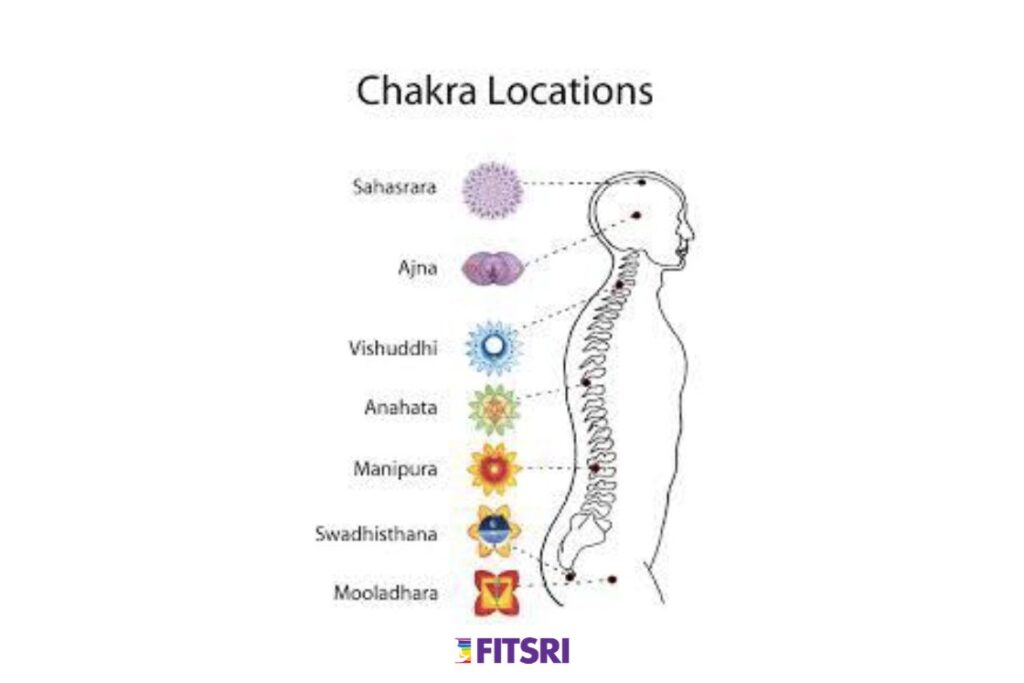
The sacral chakra, or Svadhishthana, is located in the lower abdomen, midway between the navel and the genitals. More precisely, it lies about two finger-widths above the root chakra (base of the spine) or approximately four finger-widths below the navel.
Anatomically, this location corresponds to the front of the sacrum the triangular bone at the base of the spine and sits just below the fifth lumbar vertebra. On the front side of the body, the sacral chakra aligns with the area just above the pubic bone.
In terms of associated organs, the sacral chakra is energetically linked to the ovaries in females and the testicles in males. It also influences the bladder, lower intestines, and bowels. While the pelvic floor muscles are shared energetically between the root chakra (Muladhara) and sacral chakra (Svadhishthana), the second chakra governs our reproductive and urinary systems.
Additionally, the adrenal glands, which sit on top of each kidney, are also associated with the sacral chakra. These glands contribute to the chakra’s qualities of creativity, playfulness, passion, and emotional energy.
Orange color significance
The sacral chakra exudes a feeling of warmth and excitement. Hence, it makes perfect sense that the colour of this chakra is orange.
The effect of the orange tone on the body’s emotions is associated with sexuality, imagination, desire, abstract thinking, empathy, and many other feelings.
The Symbol
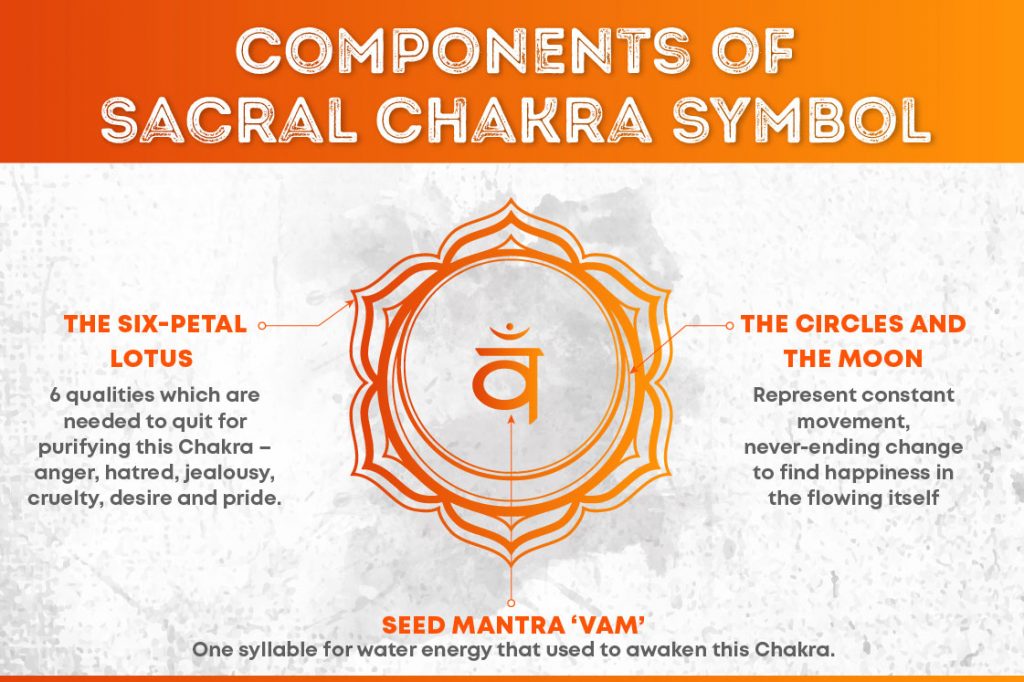
The symbol of the sacral chakra features six lotus petals surrounding two concentric circles, forming a crescent moon shape at the centre.
The six petals represent six vrittis (mental modifications or modes of consciousness): anger, envy, hatred, cruelty, pride, and desire. These vrittis are the forces that bind us to the cycle of birth and death. Through conscious effort, one can transcend these vrittis in the sacral chakra and raise the level of awareness.
The circle at the centre symbolises the water element, which governs fluidity, emotions, and adaptability in the body. The upturned crescent moon, another key element of the Svadhishthana symbol, represents feminine energy and creates a connection with the subconscious mind.
The energy frequency and seed mantra
As the second chakra in the system, the sacral chakra holds a higher energy level than the root chakra. When balanced, it vibrates at a frequency of 288 Hz.
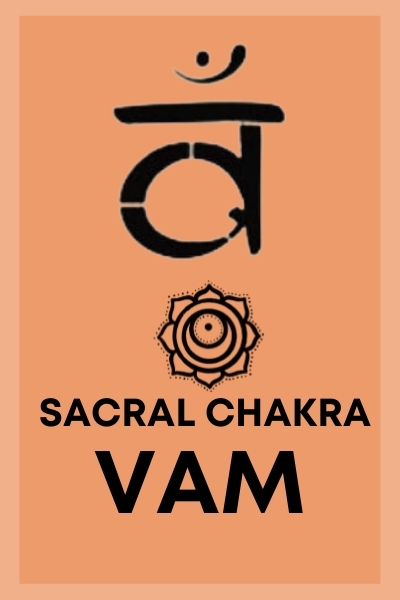 Image: Fitsri
Image: Fitsri“Vam” is the seed sound (bija mantra) associated with the sacral chakra. Chanting this mantra helps activate and balance the chakra’s energy. It is considered a healing sound, especially beneficial when experiencing blockages or imbalances in the sacral chakra.
Characteristics of sacral chakra
 Image: CanvaEmotions: The sacral chakra energy connects with the feelings and emotions of an individual.
Joy: Motivated by joy and bliss, the sacral chakra is answerable for your satisfaction in life through the senses. It makes the establishment for passionate prosperity.
Creativity: The sacral chakra assists with comprehension and fosters private associations with others.
Passion: The sacral chakra stirs the innovative articulation, permitting the investigation of groundbreaking thoughts and invigorates the creative mind.
Enthusiasm: The sacral chakra’s energy permits finding and investigating what a person is enthusiastic about. This enthusiasm allows one to enjoy life.
Image: CanvaEmotions: The sacral chakra energy connects with the feelings and emotions of an individual.
Joy: Motivated by joy and bliss, the sacral chakra is answerable for your satisfaction in life through the senses. It makes the establishment for passionate prosperity.
Creativity: The sacral chakra assists with comprehension and fosters private associations with others.
Passion: The sacral chakra stirs the innovative articulation, permitting the investigation of groundbreaking thoughts and invigorates the creative mind.
Enthusiasm: The sacral chakra’s energy permits finding and investigating what a person is enthusiastic about. This enthusiasm allows one to enjoy life.
How to know if the sacral chakra is balanced?
A balanced Sacral Chakra houses creativity, healthy relationship, and sexuality. It is openness to the surroundings. The signs of a balanced sacral chakra are:
Creativeness: The Sacral Chakra’s fundamental center permits the person to find what they appreciate, shape pastimes, and make adoring and energizing connections. Helps to identify personal identity: The Second Chakra focuses on the individual role in the outside world and how it reacts to the alluring powers of the actual world. Financially stable: The Svadhisthana is the establishment of a sound conscience that permits us to associate with the world without undercutting ourselves or claiming to be somebody else. Individuals with a solid Second Chakra can endure monetarily and indeed on their own and bond with others to form a good friendship. Can face challenges: A decent Second Chakra can face challenges and have the strength to recuperate when things turn out badly.How to identify when the sacral chakra is imbalanced?
An imbalance in the sacral chakra can weaken its energy and affect your emotional and physical well-being. Signs of an unaligned sacral chakra include discouragement, emotional sensitivity, anxiety, and fear of emotional intimacy. You may also notice clingy behaviour, obsessive attachments, or difficulty letting go in relationships. This imbalance can extend to your connection with material aspects of life, such as career and creative work.
1. Blocked / underactive sacral chakra
A blocked sacral chakra often brings a sense of emotional disconnection or lack of control. It may lead to vulnerability, insecurity, and difficulty adapting to change. This blockage can restrict your ability to freely express desires and stifle your creative energy. You may become emotionally dependent on others, which leads to mental imbalance and a loss of connection with your inner self.
2. Overactive sacral chakra
An overactive sacral chakra releases excessive emotional energy throughout the body. Since this chakra governs emotions, overactivity can lead to intense mood swings, emotional overwhelm, and hypersensitivity. You may feel emotionally unstable, constantly seeking satisfaction from external sources, which can result in addictive behaviours or impulsive desires.
Problems caused by imbalanced sacral chakra
Physical symptoms of a blocked sacral chakra may include:
Lower back pain Reproductive organ dysfunction Pain in the lower abdomen Kidney issues Urinary tract problems Premenstrual discomfortPsychological symptoms may include:
Addictions and compulsive habits Guilt related to sexuality Emotional confusion Mood instability Obsessive thoughts or behaviour Emotional dependencyHow to balance sacral chakra?
 Image: Canva
Image: CanvaIf you’re experiencing signs of imbalance in your sacral chakra, here are some effective practices to restore its energy flow and promote emotional and physical harmony:
1. Meditate on orange color
While meditating, bring your attention to the lower abdomen, just below the navel. Visualise a glowing orange light in this area, as orange is the colour associated with the sacral chakra (Svadhishthana).
Meditate with the intention of inner peace and joy, rather than focusing or forcing anything. Let the orange light expand gently as you breathe, helping you connect with your creativity and emotions.
2. Chant seed mantra “Vam”
The seed sound (bija mantra) of the sacral chakra is “Vam.” Repeating this mantra during meditation helps activate and balance the chakra’s energy.
Chanting “Vam” aloud or silently stimulates your sexuality, creativity, and capacity for pleasure. It aligns your inner vibrations with the natural frequency of the second chakra.
3. Mudras to activate sacral chakra
Mudras in yoga are simplest exercise to redirects the blocked energy chakra within the body.
Shakti mudra and ushas mudra help balance the sacral chakra. These Mudras (Hand Gestures) stabilize the imbalance caused by several factors. Usha Mudra pacifies creativity and sexuality. Shakti Mudra is practiced to enhance your physical and mental wellbeing hence focusing on inner strength.
Tip: For deeper healing, combine mudras with chanting and visualisation
4. Practice hip opening yoga poses
Certain hip-opening yoga poses can release tension stored in the pelvic area and help realign the sacral chakra:
Upavistha Konasana (Seated Wide-Angle Pose) Goddess Pose Mandukasana (Frog Pose) Pigeon Pose Triangle PoseThese postures open the hips, improve blood flow, and release trapped emotional energy.
5. Stones for sacral chakra
Crystals carry vibrational frequencies that support chakra healing. For the sacral chakra:
Orange Calcite: Boosts vitality, sexual energy, and joy. Carnelian: Enhances creativity, courage, and emotional warmth. Citrine: Clears blockages and amplifies positive energy. Moonstone: Soothes emotional instability and balances overactive or underactive chakra states.Wear these stones as jewellery or place them on your lower abdomen during rest or meditation
6. Food to balance
Since the Wheel depicts the second element, water and is orange in colour, feed yourself watery vegetables, like watermelons, muskmelons, cucumber, Pine Apples, Oranges, Mangoes, etc. Try Cinnamon, Vanilla, and sesame seeds for spices to tune up your abdomen and neighbouring parts.
Join Our 40-Day Live Kundalini & Chakra Yoga Journey
Affirmations to Vitalise imbalanced Sacral Chakra
In the end, speak these affirmations as a reminder to yourself:
I value my body I am peaceful inside and outside I feel compassion and pleasure I embrace my sexuality I am creative and full of desires I allow myself to connect indifferently Every relationship is full of joy. I stay connected with my feelings.Conclusion
If you haven’t been near a natural water body lately, now is the time. The sacral chakra is deeply connected to the water element, and lack of interaction with water both physically and energetically—can disturb its balance. Dehydration or emotional stagnation often leads to issues like bladder problems, urinary discomfort, and emotional imbalances associated with the second chakra.
A simple walk along a riverbank, lakeside, or seashore can help restore harmony. Let the presence of water soothe your senses, awaken your creativity, and support the natural flow of your emotions.

 Tfoso
Tfoso 
































